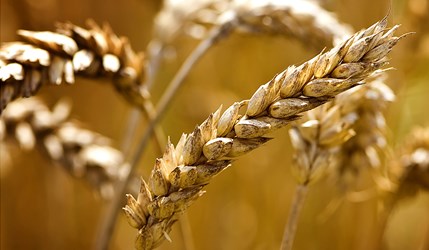- Home
- Variety selection tool for winter wheat
Variety selection tool for winter wheat
Navigate Recommended Lists (RL) winter wheat trial data, make comparisons and identify the most promising varieties for your unique situation.
 AHDB
AHDB
Use filters to home in on winter wheat varieties and agronomic merit scores to reveal those with the greatest genetic potential to resist lodging and diseases on your farm.
Important notes
- This tool is based on RL 2025/26 data (released 2 December 2024)
- The next update is scheduled for early 2026 to reflect RL 2026/27 data (released 1 December 2025)
- To use the tool, click on the image (below)
Footnotes
1. Variety filters
Filters are a simple way to exclude varieties from an analysis. They allow you to specify market requirements, account for key diseases and reflect preferred agronomic features. Only varieties that meet your needs show in the scatter plot chart (bottom right).
Use the drop-down menus to select end-use (e.g. UKFM groups), other market options (suitability for export and distilling), ripening days, latest safe sowing date and resistance to orange wheat blossom midge (OWBM).
Use the green slide selectors (or number boxes) to define preferred ranges for disease resistance, lodging (+ or – PGR), sprouting and grain quality (Hagberg Falling Number – HFN, specific weight and protein). Note: For many fields, it is possible to select values to one decimal place. Often rounded up/down to the nearest whole number in the RL publication (e.g. most disease ratings), the tool provides greater selection power. Note: take care to not exclude unintended data (e.g. to show varieties with a published resistance rating of 7, select a range of 6.5–7.4).
Finally, use Filter panel (2) to interrogate Grain Quality (Protein %, Hagberg Falling Number and Specific Weight) and supplementary yield data: sowing date (early drilled, before 25 September or late drilled, after 1 November), rotational position (second and more) and soil type (light or heavy).
Select ‘Clear all filters’ to reset all values to the RL default values (i.e. as published in the main RL with no varieties excluded).
2. What is agronomic merit?
Disease resistance and good agronomics are considered more crucial than yield by many farmers and agronomists. Agronomic merit is a non-yield based metric that aims to capture the genetic potential for resistance to disease and lodging, to help farmers and agronomists with variety selection. The RL includes resistance ratings for key diseases and lodging. However, the relative importance of these factors will depend on your particular situation. Agronomic merit takes account of a variety’s resistance to six key diseases and lodging as well as their relative importance and is displayed on the X-axis of the chart. The table below provides an example of an agronomic merit calculation.
| Component | Importance | Weighting* | Resistance rating** | Score |
|---|---|---|---|---|
| Septoria tritici | Very high | 10 | 6 | 60 |
| Yellow rust | High | 7 | 6 | 42 |
| Brown rust | Low | 1 | 8 | 8 |
| Mildew | High | 7 | 5 | 35 |
| Fusarium ear blight | Low | 1 | 7 | 7 |
| Eyespot | Medium | 4 | 5 | 20 |
| Lodging (+PGR) | Very high | 10 | 8 | 80 |
| Lodging (-PGR) | Medium | 4 | 7 | 28 |
| Agronomic merit | 280 | |||
*RL resistance ratings use a simple scale: from 1 (least resistant) to 9 (most resistant). **Ratings and weightings shown for illustrative purposes. Importance: Very high = 10, high = 7, medium = 4 and low = 1.
By default, the importance of each of the diseases is set up in the tool depending on the regional yield data selected (UK, East, North or West). However, you can determine how agronomic merit is calculated by placing greater importance on things that really matter on your farm. You can do so by clicking the relevant button for each factor. In addition, to view a particular RL resistance rating on the X-axis instead of Agronomic merit, click on the corresponding RL rating button. This sets the weighting for the selected resistance rating to 1 and the others to 0.
3. Disease importance
4. Regions used for calculation of regional yields.
.jpg)
5. Alternative views
The coloured dots can also show a range of alternative views. For example, scope of recommendation (East, West and North) or end-use groups – use the ‘Distinguish by varieties’ drop-down box.
Learn about the recent changes to wheat rust ratings
Miscellaneous
Average LSD (5%) values for Yield are overlaid on top of the graphs, the LSDs for other variety characteristics are shown in the first column of the table on the second page, provided no varieties have been filtered out.
Tool updates
2 December 2020: The tool uses a REML analysis to estimate varietal treatment benefits (TB). The estimation is based only on (RL or NL) trial sites with both validated fungicide treated and untreated trials.


.JPG)